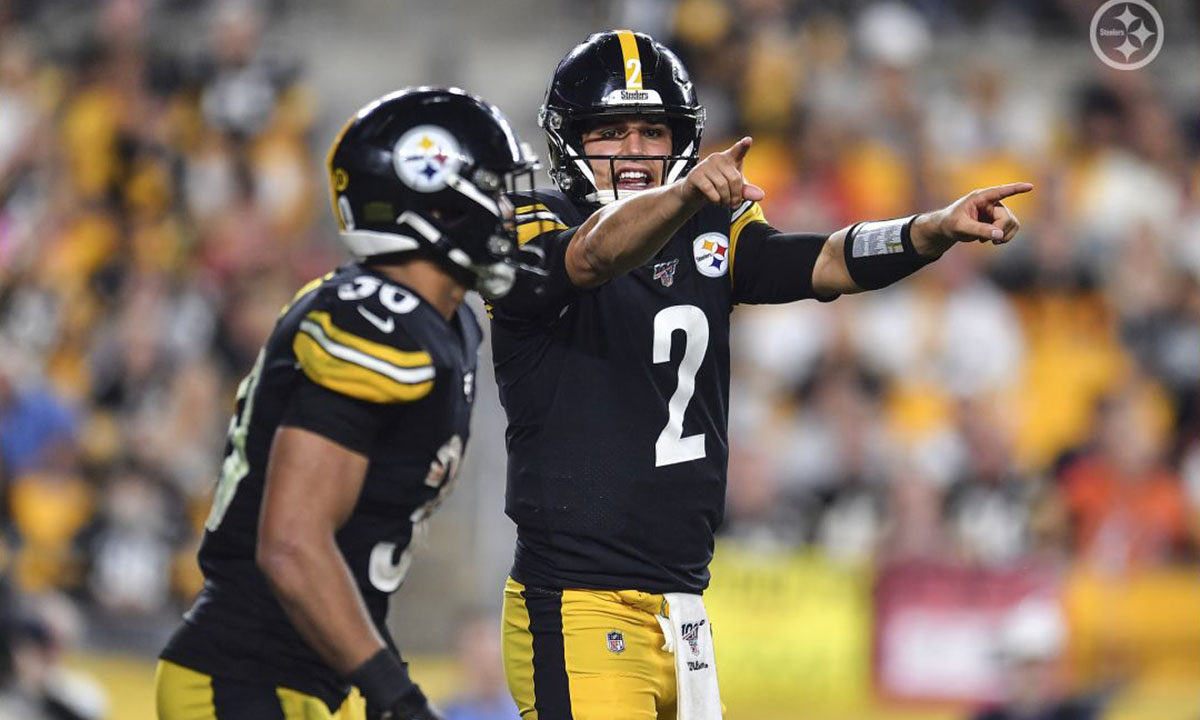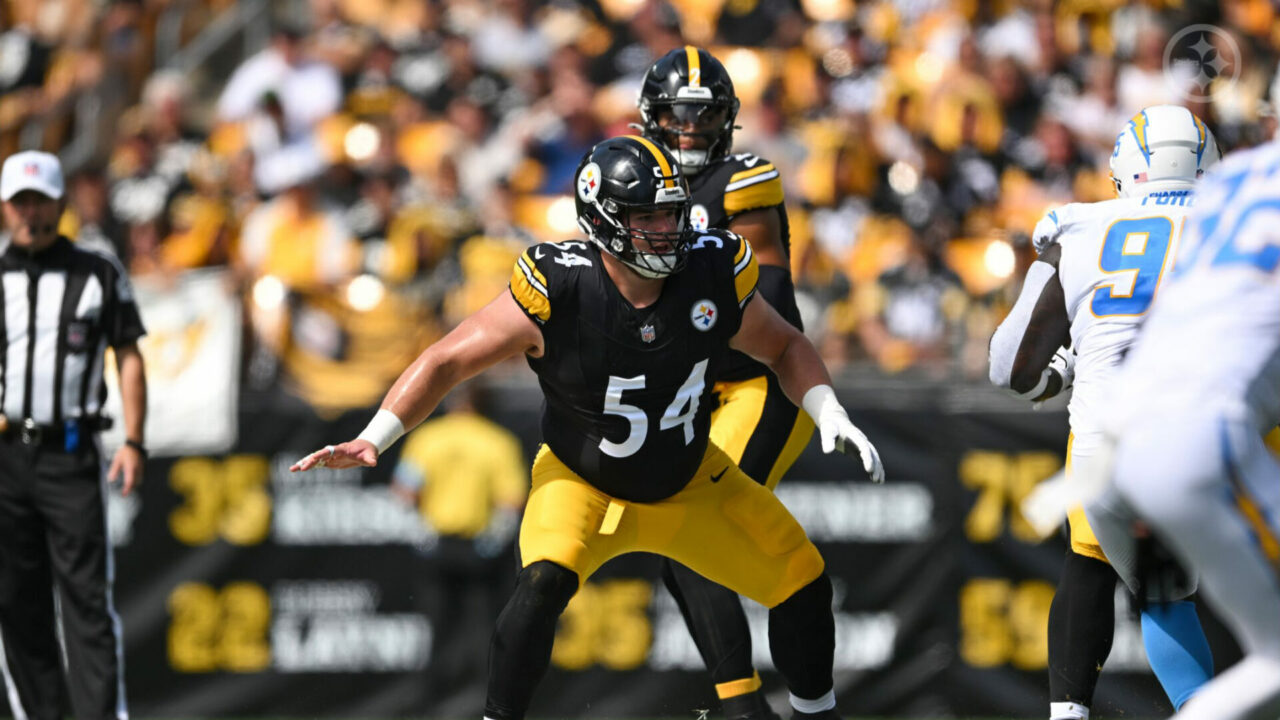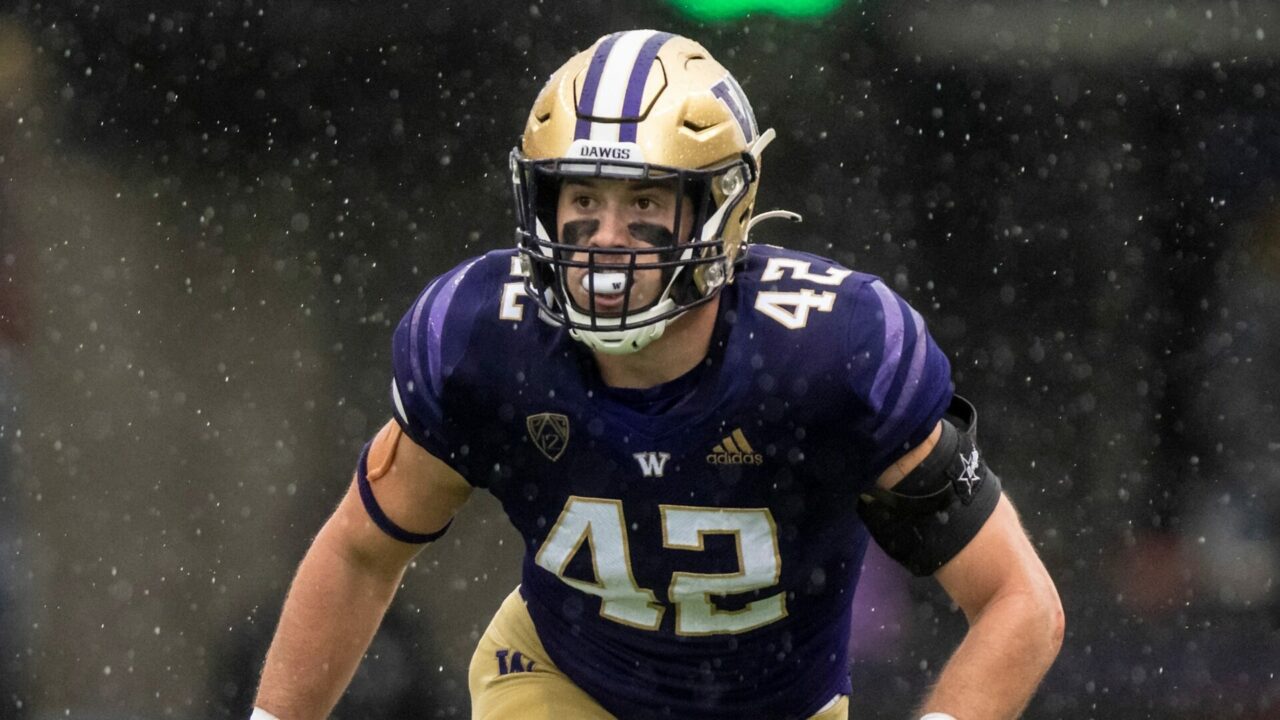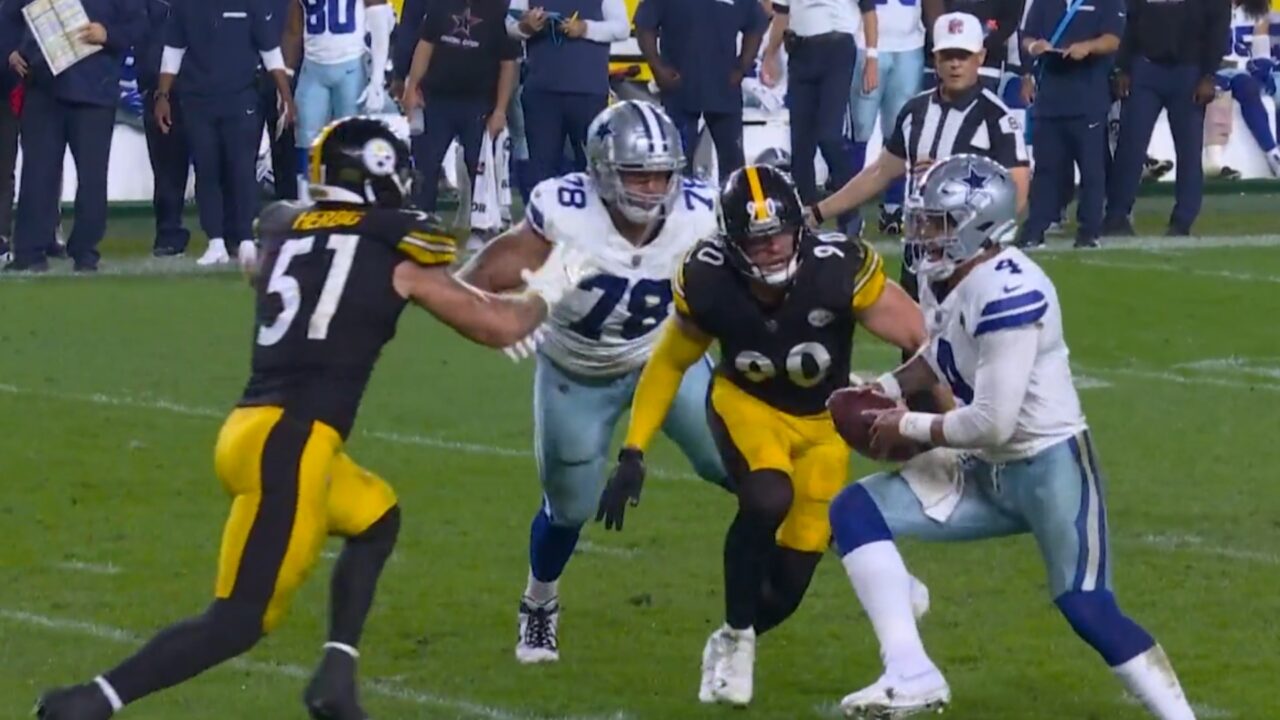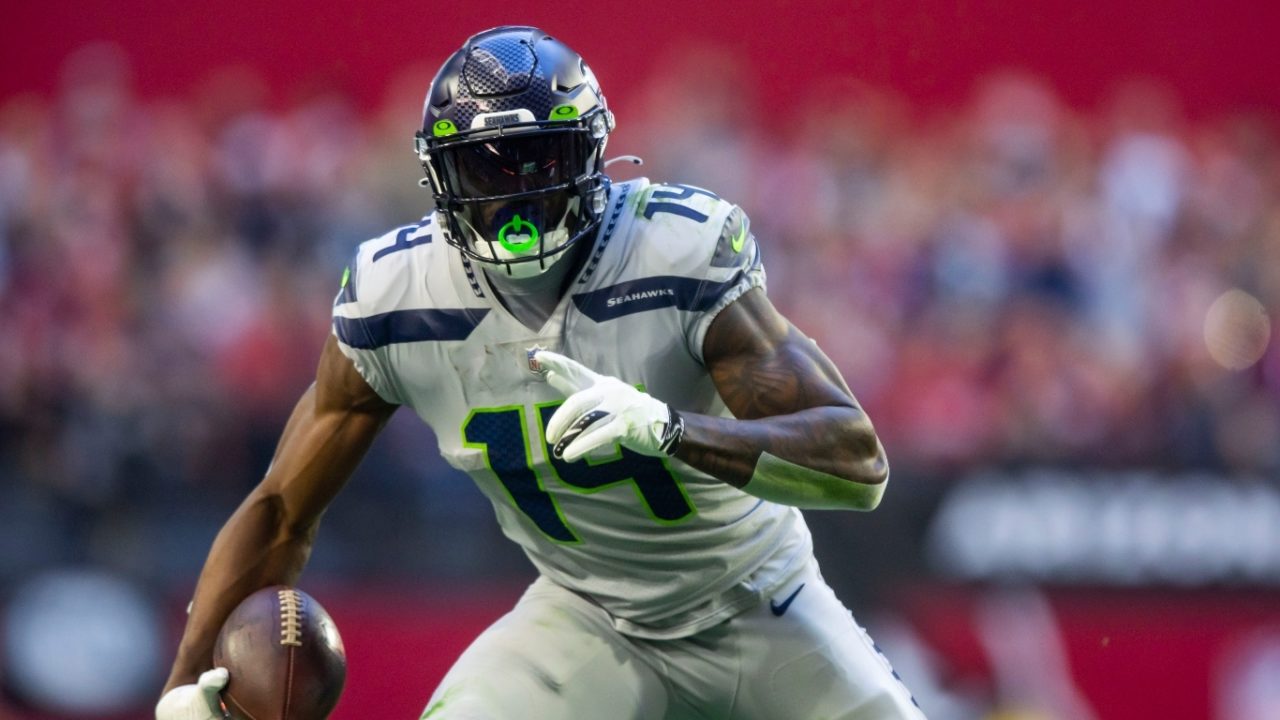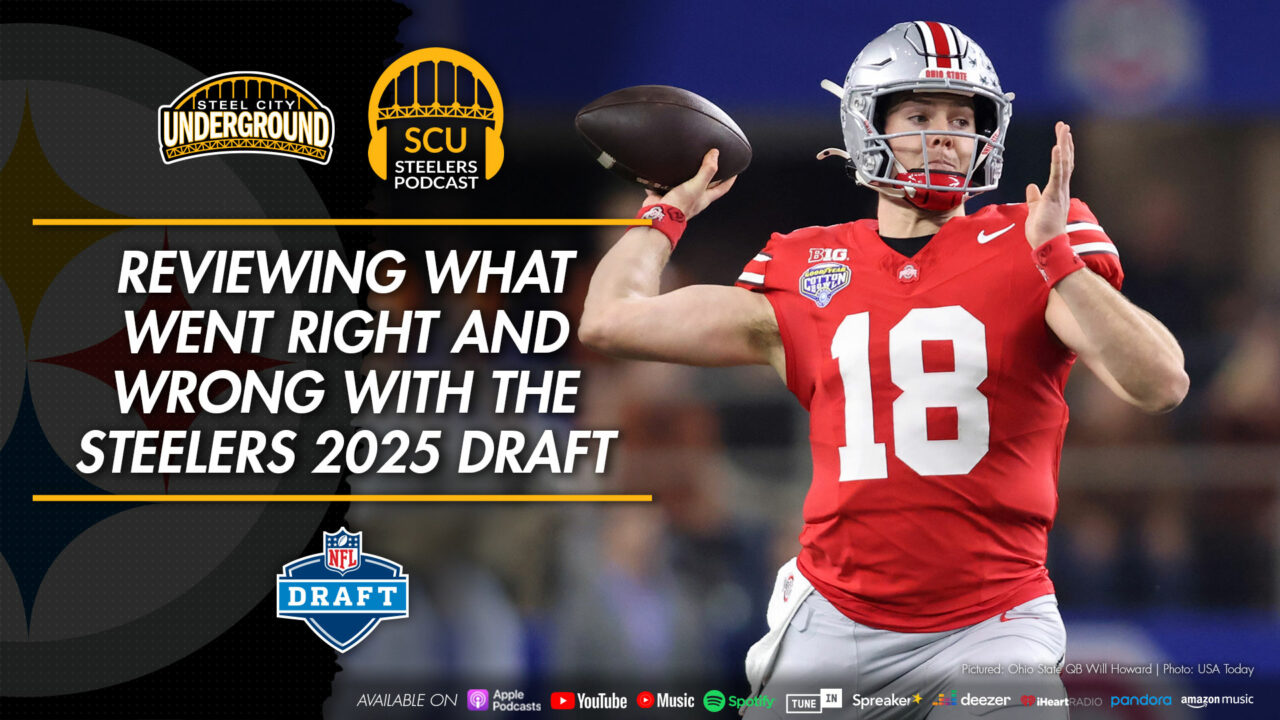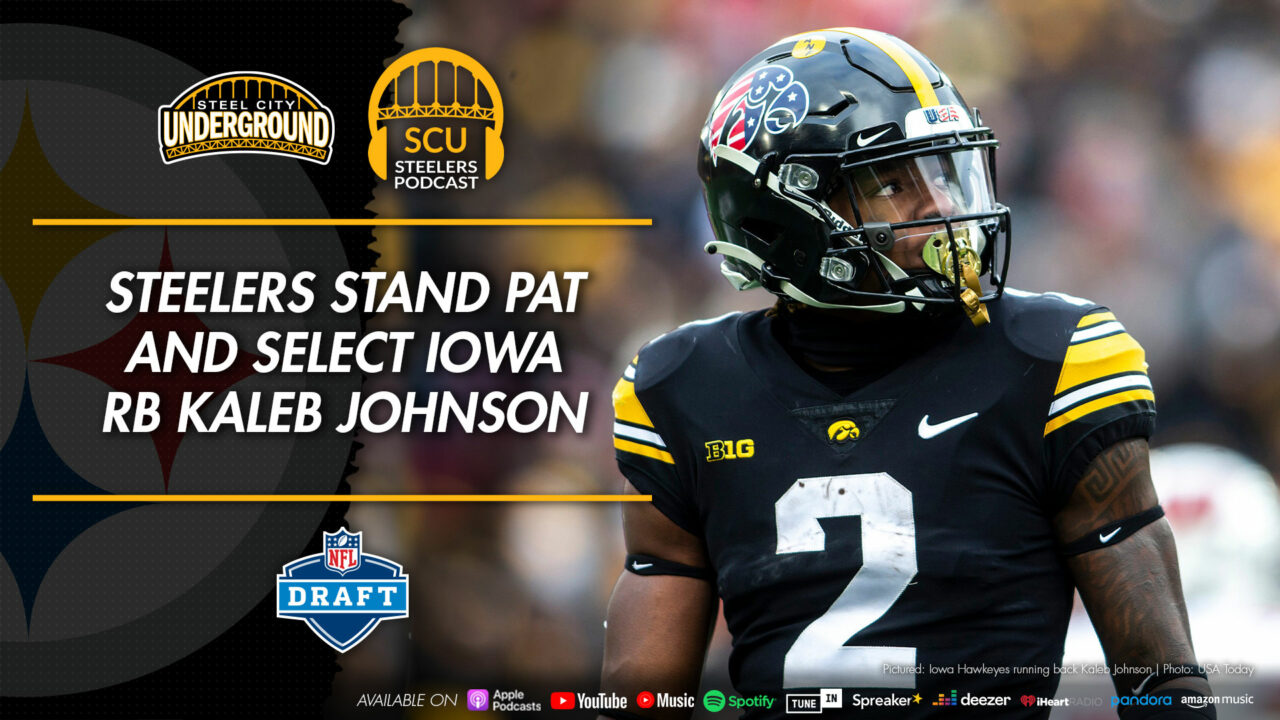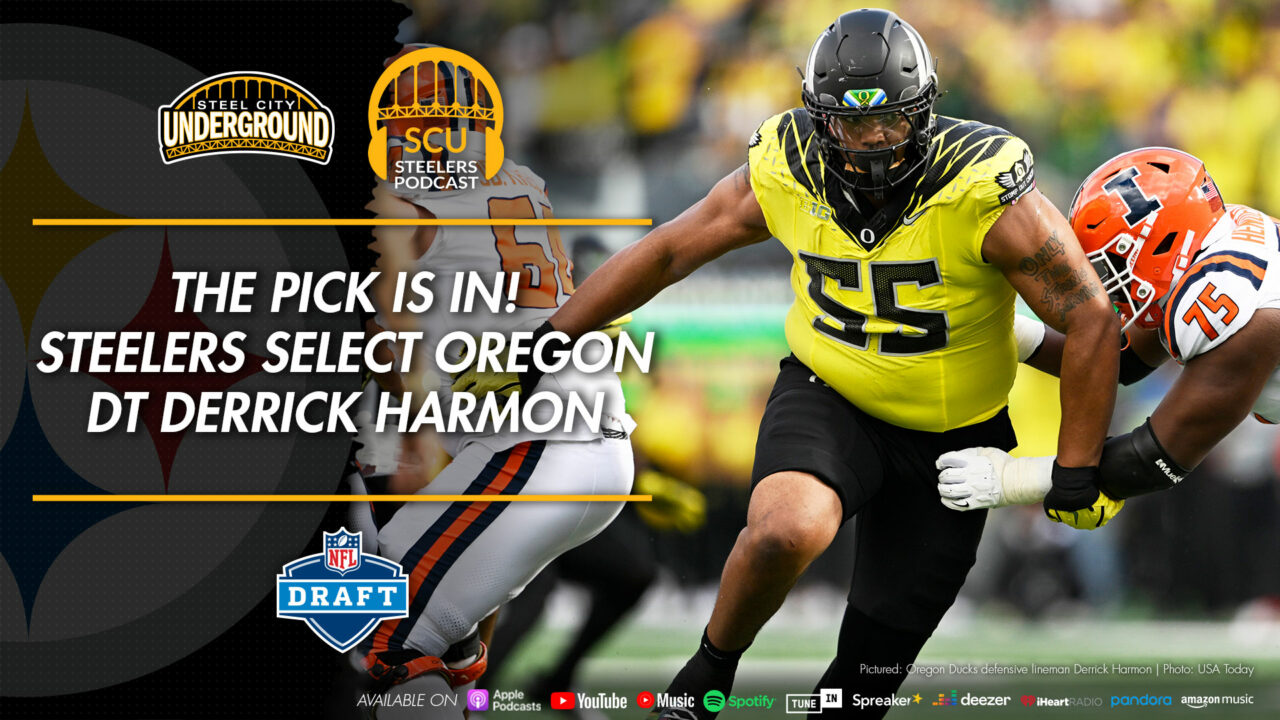Mason Rudolph “doesn’t throw deep” – so what?
I’ve heard all of the criticisms. I’ve seen all of the NexGen Stats. If I had a nickel for every time, I’ve seen someone complain about “dink and dunk” when talking about Steelers second-year quarterback Mason Rudolph over the last two weeks, I’d have a Brinks truck full of coins.
And personally, I don’t get it.
When you boil down to it, who cares if Mason Rudolph isn’t taking shots downfield on multiple plays. It’s almost like we forgot how (un)successful that was with Ben Roethlisberger last season.
Ouch. The truth hurts, doesn’t it?
But it is a painful truth. It goes back to attempting to get Sammie Coates as Big Ben’s deep threat replacement for Martavis Bryant several years ago. Do you happen to remember how many connections Roethlisberger had on deep passes to Coates that season?
Six.
And they all happened in the first five weeks of the year, as Sammie smashed his fingers and was never the same impact player again.
Bryant flew the coop, leaving Antonio Brown to his lonesome while fans nitpicked the draft pick of JuJu Smith-Schuster, who then became another favorite target of Big Ben.
Or did he?
Were we not pointing the finger at Ben forcing balls to Brown as to the reason the Steelers QB led the league in interceptions last season?
I guess people want to have their cake and eat it too, but I wanted to bring up all of these comments from the new “hot take” culture before delving into more numbers that will make that segment of critics replace that cake with crow.
That is, short passes aren’t the devil. (Bobby Bouche’s mom would’ve probably said this, had she liked foosball.)
Let’s take that concept a step further by mentioning deep passes aren’t the most successful plays to attempt. It’s no secret that the farther a pass is thrown, the less likely it is to be completed.
Just look at Ben Roethlisberger’s Next Gen Stats from 2018. He wasn’t anywhere near the top of the list of most aggressive quarterbacks by their metrics. In fact, of the 39 passers listed, names such as Tom Brady (28th) and Aaron Rodgers (30th) show up near the bottom of the list.
It skews even further when you see the average of completed air yards (CAY) as Ben Roethlisberger ranked 34th of the 39 with an average of 4.8 yards completed in the air. That is:
Air Yards is the vertical yards on a pass attempt at the moment the ball is caught in relation to the line of scrimmage. CAY shows the average Air Yards a passer throws on completions, and IAY shows the average Air Yards a passer throws on all attempts.
Ben’s IAY was 24th among all passers last season despite leading the league in passing yards.
Things that make you go hmmm…. Maybe that’s why Big Ben completed 67% of his passes?
By comparison, Roethlisberger’s 2018 CAY is 4.8 to an IAY of 7.7.
Mason Rudolph is currently tracking a CAY of 3.3 and an IAY of 6.0.
So why do the stats seem so far off? Well, there’s no secret that Rudolph isn’t attempting deep passes, but it’s also no secret that deep passes don’t always work.
To further hammer the point home, I charted all of Roethlisberger’s passes in the season opener against the New England Patriots. This first chart shows his completed passes and the actual distance the ball was thrown versus the actual yards a quarterback receives credit for after the catch. But first, here’s the visual from Next Gen Stats:
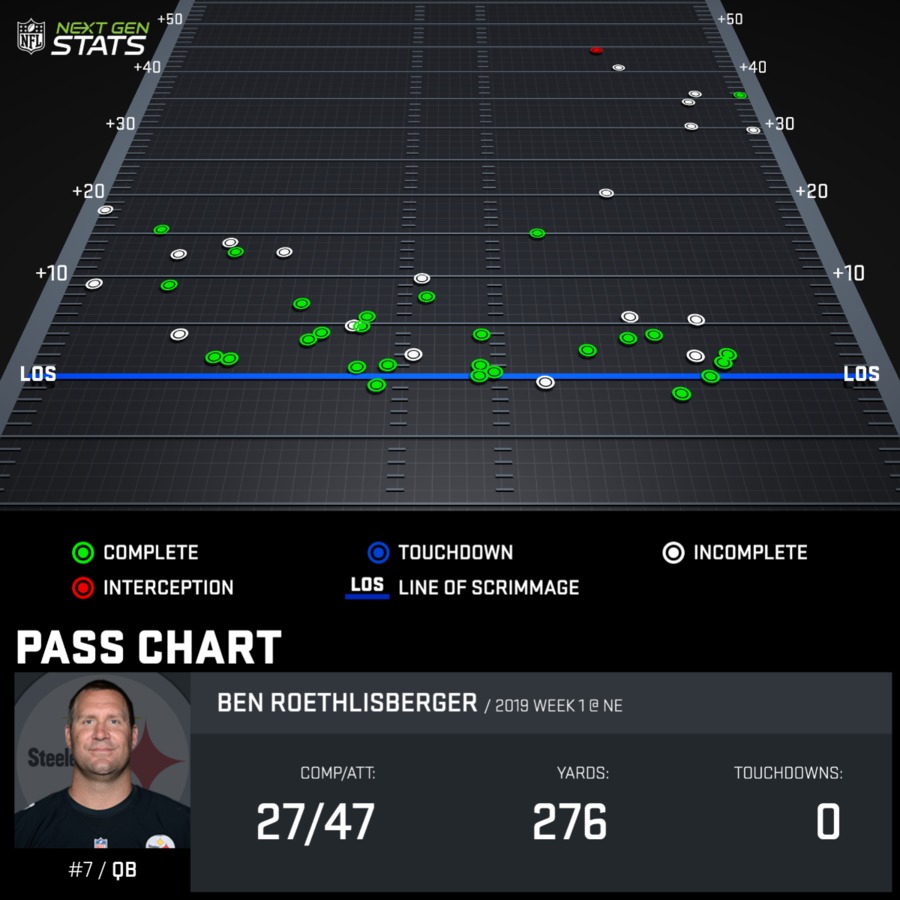
Now, here’s the same for Rudolph’s Week 4 performance against the Bengals:
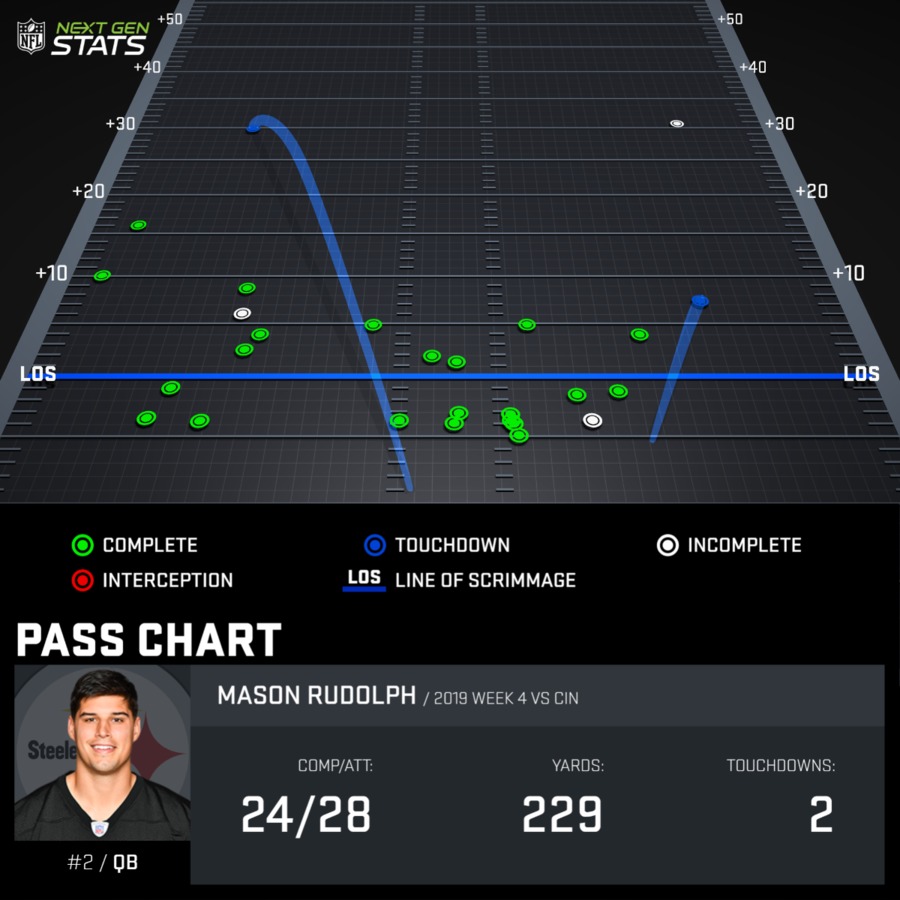
Obviously Rudolph didn’t have the same volume as Big Ben (and game script dictated some of that) but the success rate is what we should be following. Out of Roethlisberger’s completions against the Patriots, only four of those passes were legitimately thrown beyond ten yards:
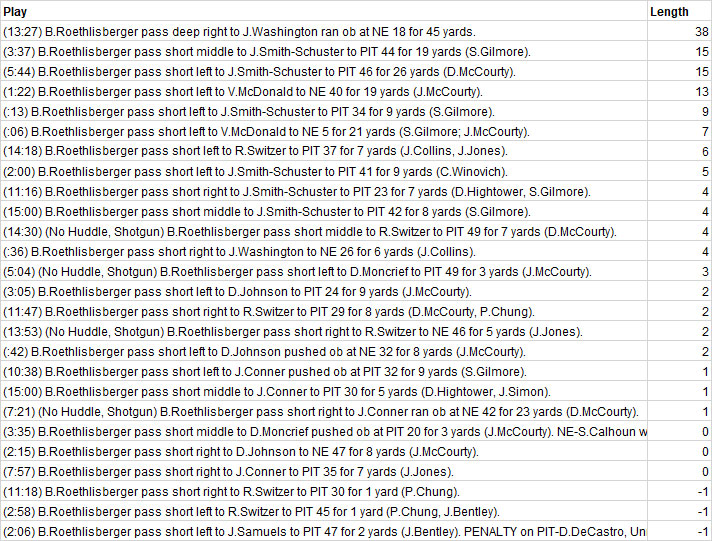
Rudolph went 3-of-4 throwing a distance of ten or longer, including a touchdown pass that was initially thrown 32 yards downfield.
More alarming is the number of passes Roethlisberger did throw beyond 10 yards of the line of scrimmage. Of those 15 passes, 11 of them fell incomplete:
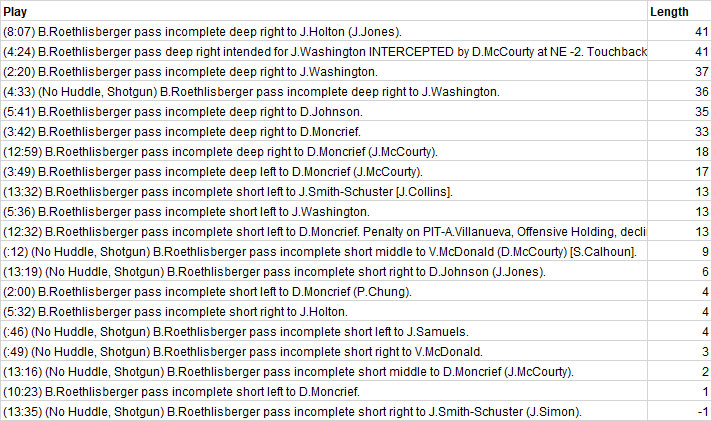
Which leads me full circle to the “who cares?” part of the headline. I realize that Ben may have been hurt in New England, but honestly, we could’ve charted many games like this and found a similar pattern: that most of what we consider big throws are really shorter passes where the receivers then make bigger plays.
We’ve seen this same script play out with other passers in recent years as well. Carson Wentz absolutely torched the Steelers in Week 3 of 2016, as the rookie ate up Pittsburgh’s defense with short throw after short throw.
Alex Smith was largely criticized for the same throughout his entire career too.
That’s not to say that Mason Rudolph will always be a “dink and dunk” quarterback, however. We’ve already seen successful downfield throws; only that the number of attempts isn’t in the Roethlisberger stratosphere at this time.
Heck, Ben’s attempts weren’t where they recently landed either when he first entered the field as a rookie out of Miami University.
Back in 2004, Roethlisberger only attempted more than 25 passes once in 14 games (13 starts). He only attempted more than 22 passes four times (24, 25 twice, and 28). He had a total of four games with more than 200 (221, 221, 231) yards passing and only a single game with more than 300 (316).
In two starts thus far, Rudolph has attempted 27 and 28 passes with a 67.6 completion rate, and also has a game with 200+ passing yards (229) under his belt after facing Cincinnati.
Maybe the narrative of him “not going deep” is one we shouldn’t be pressing so strongly so short into his NFL career.
After all, look what limiting Ben Roethlisberger as a rookie did for his career.
